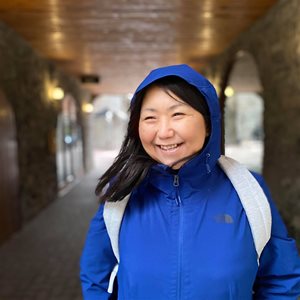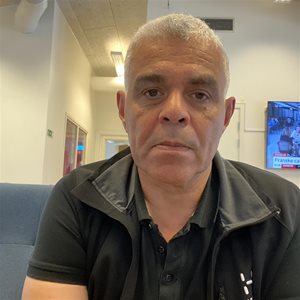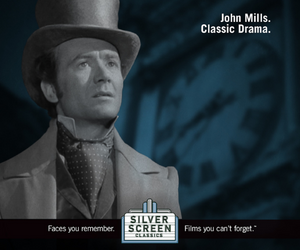
Indigenous media want to work together
By Bill Roberts
ON THE 25th ANNIVERSARY of National Indigenous Peoples Day, a day which recognizes and honours the heritage, diverse cultures and outstanding achievements of First Nations, Inuit and Metis peoples, the Banff World Media Fest held its inaugural International Indigenous Screen Summit, with a kick-off presentation which included Australia’s SBS, TG4 in Ireland, KNR Radio/TV Greenland, New Zealand’s Maori TV, Nunavut’s Uvagut TV, and was moderated by APTN CEO Monika Ille.
APTN was the first Indigenous television broadcaster the world and the general consensus was the need for Indigenous “narrative sovereignty” has never been more important. As moderator Ille put it, “We need to be listened to, not just talked about.”
Yet there was also recognition Canadian institutions such as the Canada Media Fund, with $107 million invested and 12 Indigenous languages imbedded in that fund’s plans, were making progress.
Other organizations are making headway as well, as witnessed by the June 21st announcement of Hollywood Suite and WIFT teaming-up on a new Indigenous writers program offering mentorship and training to mid-level First Nations, Inuit and Metis creators.
Tanya Denning Orman, director, Indigenous content at SBS (Australia) spoke to her public broadcaster’s National Indigenous Television (NITV) channel, launched 14 years ago, and which is freely available to all Australians as an over-the-air channel since December 2012.
More than 300 Indigenous nations and language groups are involved; with two-thirds of the broadcaster’s creative staff being Indigenous as well as 70% of the overall employee roster.
Truth-telling is a key goal of NITV, as is funding. Faced with major global players such as Netflix, and three strong commercial players at home, NITV has had to think outside the box to secure new revenue sources. This led to the launch of the “Beyond 3%”, an initiative which argues that with 3.3% of the population identifying as Aboriginal it’s unacceptable that a mere 0.3% of paid advertising in Australia is dedicated to reaching this Indigenous audience.
Launched in March of this year, “Beyond 3%” seeks to engage Aussie media buyers and agencies in addressing this revenue gap by learning more about First Nations media, being more inclusive, and committing to a media spend of at least 3% on Indigenous platforms. Orman shared that Covid-19 has been a bit of a proof-of-concept for NITV/SBS with up to 2.5 million total viewers tuning in for pandemic-related information.
“We’re now training the audience… having an impact in schools, and lobbying the federal government for more funding,” she said. “Even Netflix during the Black Lives Matter period told its audience to switch to us for real coverage… we should be working together on protecting our languages, culture and knowledge.
“I learned about ‘slow TV’ from the Sami (indigenous) people in Norway.” Added Maramena Roderick, director of content for Maori TV (New Zealand), whose service was established 17 years ago, and places heavy emphasis on the survival of the Maori language. “Only about 1% of Maoris can speak our language.”
“So, if Canada says it wants to promote and protect Indigenous languages, let’s see some action.” – Lucy Tulugarjuk, Uvagut TV
There are almost 800,000 people self-identifying as Maori in New Zealand, representing about 17% of the total population.
“We are challenged by commercialization and not much funding support since 2008… But we (Maori) must re-claim our narrative to survive,” she added. “We must hold onto our values without apology… so we have a 25-year plan mapping out our journey every step of the way… and we’ve changed our focus from output to one of impact… (plus) now we have a Maori cabinet minister who is listening.”
“For us it’s personal, it’s not just a job.”

Lucy Tulugarjuk
Lucy Tulugarjuk, managing director of Uvagut TV (Nunavut), rightly asserted to delegates “it is our absolute right to hear and see our language on radio and on TV without shame. With residential schools (and other Canadian policies) we were forced to feel shame, but now we are the proof to our Elders that our Inuktitut language can be celebrated and beautiful.
“So, if Canada says it wants to promote and protect Indigenous languages, let’s see some action. The dream behind this channel (Canada’s first Inuktut TV service) began in 1991 and we launched on January 18, 2021 (on northern cable companies through Shaw Direct, which means it’s also available nationally on that satellite platform and as well to any other TV operator who wishes to add it).
“In Canada there are 765 channels in English and French, and only one channel for Inuit people… (and) we haven’t received any federal or territorial funds as yet (Ed note: not to mention that Uvagut TV launched in a pandemic!), but I’m just holding the torch for our Elders who wanted our own Inuit television… even if some of them had never seen a TV set.”
Kim Larsen, head of television and production at KNR Radio/TV (Greenland Broadcasting Corporation), spoke for Greenland’s public broadcaster. The KNR1 television channel is its primary undertaking with most of its programming in the Kalaallisut Indigenous language.
The KNR radio station also broadcasts mainly in the Greenlandic language, with a smattering of Danish. Launched in 1958 as largely an extension of Danish domestic radio and TV, since 2013 its focus is strictly original Greenlandic content.
With a population of not quite 60,000, Greenland, the world’s largest island, is the least densely populated region of the world, after Antarctica, “so we have a big footprint to cover, yet we produce over 800 hours of original television a year and almost 3,000 original hours of radio,” said Larsen.
“We should make a platform together that we can all use and reflect what we’re doing locally and globally, and actually maybe earn some money.” – Kim Larsen KNR Radio/TV Greenland
“I think (for Indigenous broadcasters) the biggest issue is ‘findability’. We should make a platform together that we can all use and reflect what we’re doing locally and globally, and actually maybe earn some money,” he said, “perhaps also have a market or festival for Indigenous content. Most important, we need to make content for kids together, a kind of cross-platform like we saw with Sesame Street in Canada in French and English.”
Alan Esslemont, director general of TG4 and chair of The Celtic Media Festival (Ireland), described TG4 as a public service (TV) broadcaster of the Irish language, launched in 1996.

Kim Larsen
There are not quite five million in Ireland, “and only about 200,000 are using Irish as their habitual family language.” lamented Esslemont. “When we came on air 25 years ago we weren’t popular, but now we’re the sixth-most-watched channel and we’ve won many awards, including this year Europe’s top award for branding… (but) we still look across to Wales, which has twice our funding.” (S4C is a Welsh language, publicly-funded TV channel, launched in 1982.)
Esslemont added, “for the next, coming generation, television creates status for our Indigenous languages, so I’d be very interested in working together.”
In sum, the session encouraged a welcome sense Indigenous broadcasting playing a growing role in the global media landscape, empowering and contributing to self-determination, narrative sovereignty, and the internationally recognized right of Indigenous peoples to establish their own media in their own languages.
In my world view, that fits perfectly with Canada continuing to become the country we all aspire to be.
Miigwetch!


